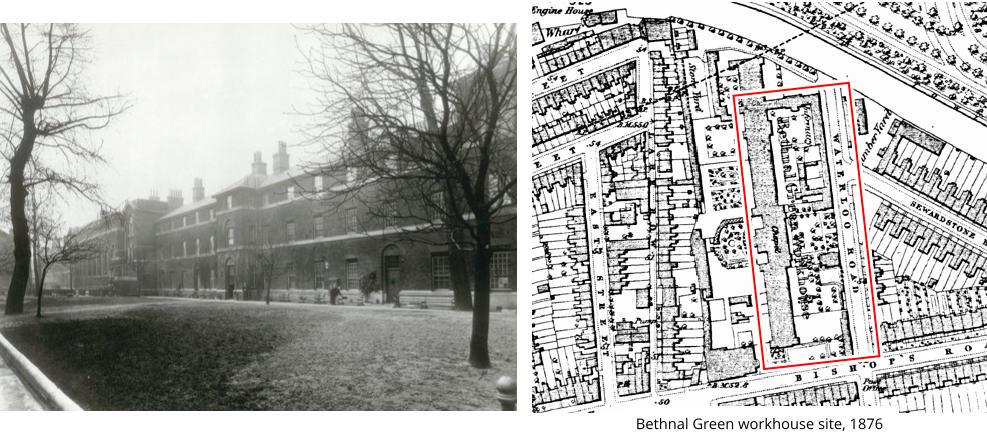In the 1871 Census the widowed Mary Blake was now an inmate in the Workhouse, Bethnal Green. She died in the second quarter of 1873 in Bethnal
Green. The workhouse in Bethnal Green was in Waterloo Road, off Cheshire Street near St. Matthew's church.
By the 1860s the official capacity of Bethnal Green Workhouse (St Matthew) was 1,400 inmates and in January 1866 it was the subject of one of a series of
articles in the medical journal The Lancet investigating conditions in London workhouses and their infirmaries. The report contained a large number of
criticisms, particularly of the twenty-seven sick wards:
•
No running water was available from 5pm until 7am.
•
Classification was poor, with imbeciles scattered amongst the various wards, and foul cases mixed with ordinary patients.
•
Lighting and ventilation were inadequate - many windows were six feet from the floor to prevent the inmates seeing out.
•
Overcrowding resulted in each patient having only 300 cubic feet, only a quarter of official recommendations.
•
There was a lack of water-closets and urine-soaked floors.
•
Washing facilities were severely lacking - in one children's ward, 17 children were washed daily in one pail, several in the same water, and dried with sheets.
•
In the male wards, forty-five men were served by two latrines which were flushed twice a day.
•
A staff of only two paid nurses, both untrained, nursed up to 600 sick. They were assisted by 40 pauper nurses and helpers 'whose tendencies to drink
cannot be controlled'.
•
The insane ward consisted of small, dark, ill-ventilated rooms, under the charge of a male pauper, a weaver by trade with no knowledge of nursing.
•
The diet was lacking in meat, and the aged and infirm were given difficult to digest food such as suet pudding
•
The number of medical officers was inadequate for the number of patients.
Despite all these complaints, Bethnal Green was placed in the best of The Lancet's three categories of workhouse, as regards sick care provision, an indication
of how bad conditions were in establishments in the other two classes.
The workhouse was demolished in 1935 and the above photo was taken just prior to this.








